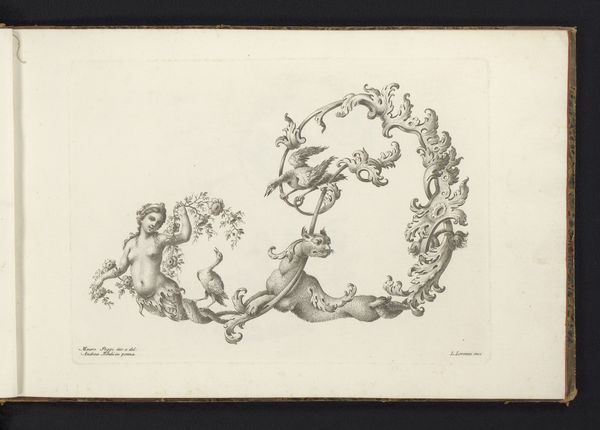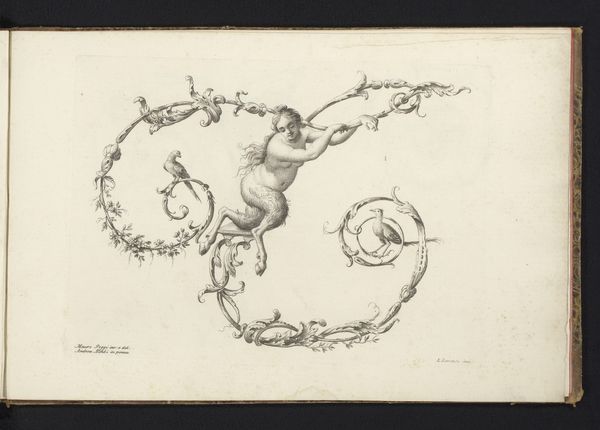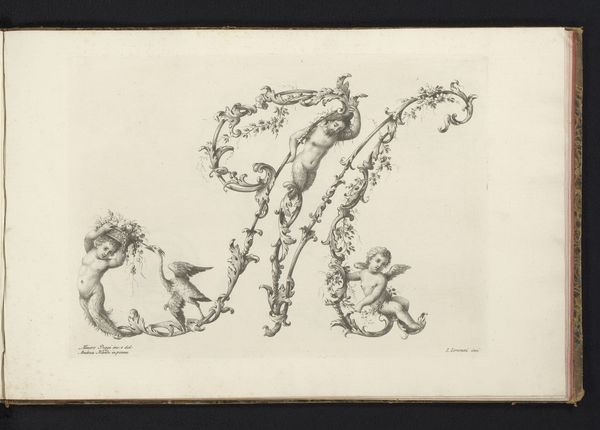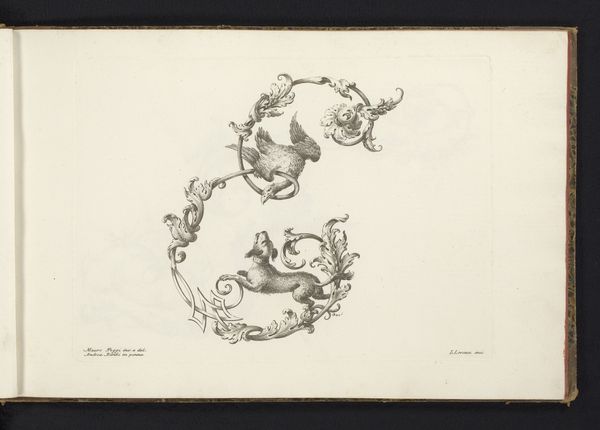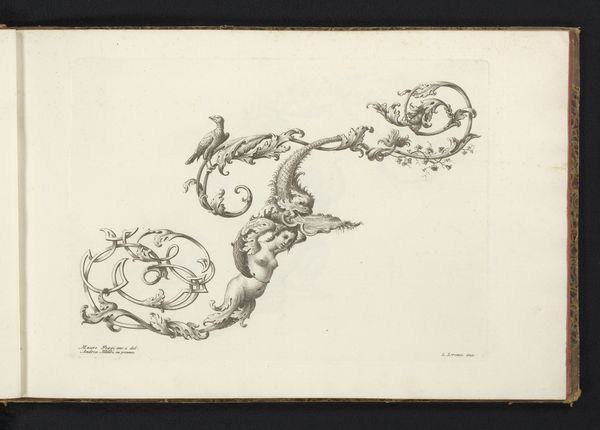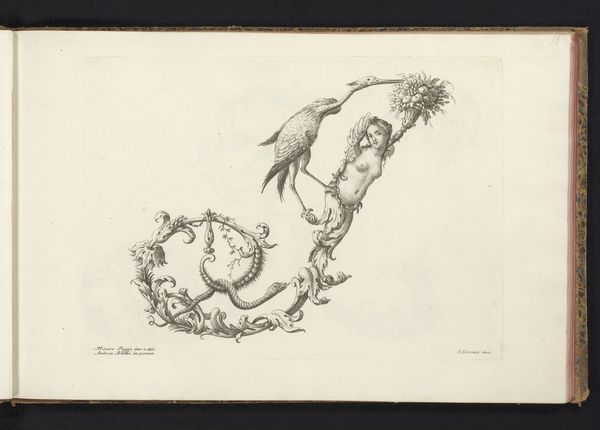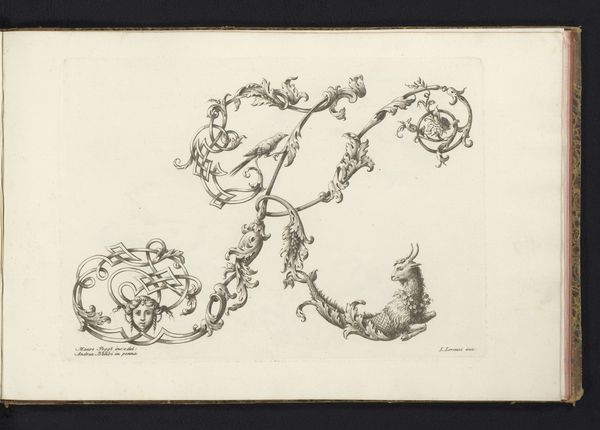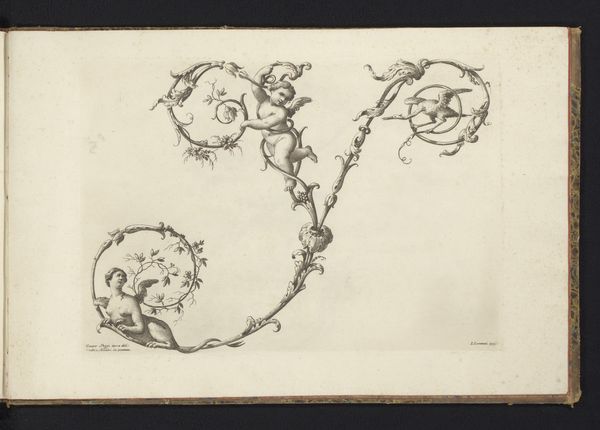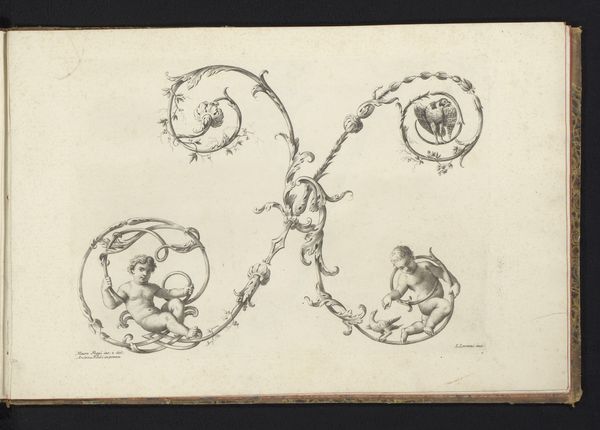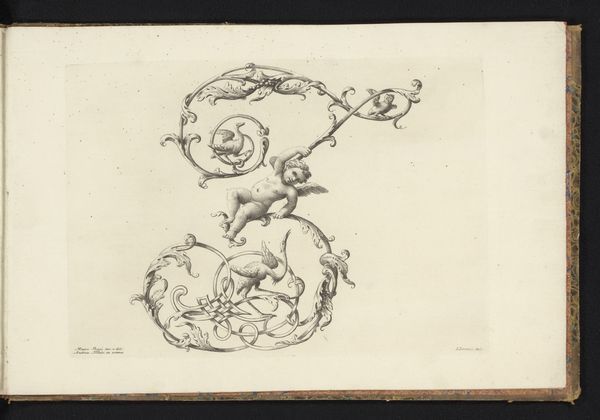
drawing, paper, ink
#
drawing
#
allegory
#
baroque
#
figuration
#
paper
#
ink
#
miniature
Dimensions: height 225 mm, width 315 mm
Copyright: Rijks Museum: Open Domain
Lorenzo Lorenzi designed this ornamental letter ‘G’ in the late 18th century. At its heart is a cherubic figure, playfully holding what appears to be a snake, all framed within elaborate foliage inhabited by a bird and a squirrel. The cupid motif, which dates back to classical antiquity, is immediately recognizable and loaded with cultural baggage. Cupids are often depicted wielding bows and arrows, symbolizing desire and affection. Yet here, we see a snake, a potent symbol found across cultures, from the serpent in the Garden of Eden to the Ouroboros, representing cyclicality and the eternal return. Its presence introduces an ambivalent note, alluding to both temptation and transformation. Such imagery isn't confined to the 18th century, the use of naturalistic elements arranged in artful compositions can be traced all the way back to ancient Greece, where the same organic motifs were used to adorn buildings. Notice how these symbols, with roots deep in human consciousness, resurface, often in altered forms. They tap into a collective memory, engaging viewers on a subconscious level, reminding us of the cyclical nature of human experience.
Comments
No comments
Be the first to comment and join the conversation on the ultimate creative platform.
